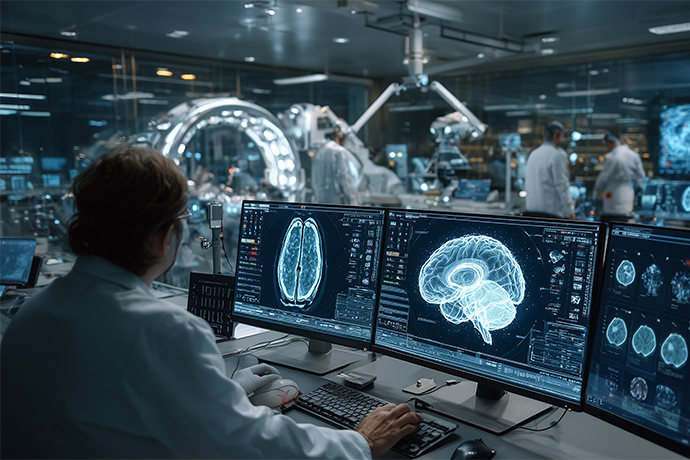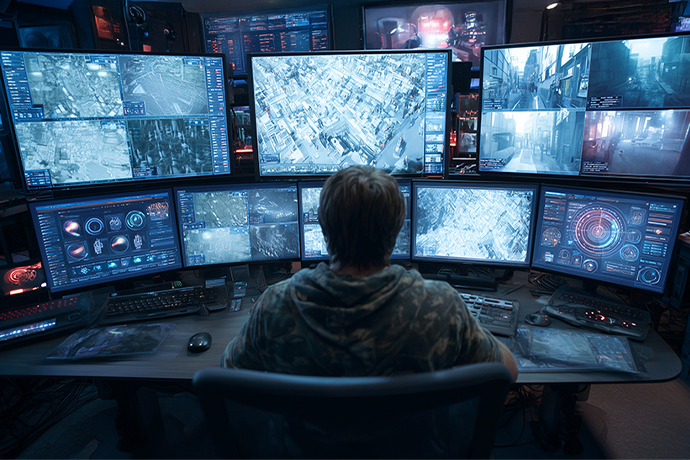AI-Powered Video Analytics
AI-Powered Video Analytics
AI Video Monitoring: Revolutionising Healthcare Security

The age of AI-driven video monitoring has arrived. Experts forecast that the global market for AI in video surveillance will soar from about $5.6 billion in 2023 to $16.3 billion by 2028. This highlights a rapid move to smart, cloud-enabled systems. Hospitals adopting these solutions transition from merely responding to incidents to actively supporting patient care. Clinical evidence supports this: studies show video monitoring in hospitals can reduce patient falls and the need for professional sitters (staff hired to supervise at-risk patients), leading to fall decreases and significant cost savings.

Why cloud-based VMS and video analytics services matter?
1. Centralized visibility
– Unified operations: A cloud platform lets hospitals, clinics, and satellite facilities manage all cameras, recordings, and analytics from one dashboard.
2. AI-driven insights for patient care & safety
– Person falls detection and patient monitoring: AI can alert staff in real time if a patient falls or wanders unsafely.
– Crowd and queue analysis: Helps manage waiting rooms, ER congestion, and visitor flow to reduce risk and improve experience.
– Infection-control monitoring: Detecting PPE compliance or occupancy limits contributes to safer environments.
3. Scalability & agility
– No “pilot paralysis”: Cloud-native VSaaS allows fast roll-out beyond one ward or site, with minimal local infrastructure.
– Elastic resources: Storage, analytics, and compute scale with demand, whether you’re adding cameras or new AI models.
4. Faster innovation & model updates
– Continuous AI improvement: Detection algorithms (e.g., Missing Object, abandoned objects, Fire and Smoke Detection) can be deployed across sites instantly, without hardware swaps.
– Future-proof platform: As AI matures, healthcare providers benefit immediately rather than waiting for next-generation appliances.
5. Operational & financial efficiency
– Reduced capex: Pay-as-you-go pricing shifts spend from heavy up-front investments to predictable Opex.
– Lower maintenance burden: Cloud service providers handle patching, scaling, and upgrades, freeing IT and biomedical teams for higher-value work.
6. Enhanced collaboration & incident response
– Secure remote access: Authorized staff can review video or analytics from anywhere, speeding response times.
– Evidence management: Central storage with audit trails simplifies investigations, insurance claims, or compliance reporting.
Key Technical Building Blocks
1. Hybrid Inference Architecture – Balancing Speed with Scale
Use AI processing at the camera or local device (called “edge inference”) for instant alerts such as detecting a patient leaving their bed or emergency situations. Cloud-based AI (“cloud inference”) handles big-picture analytics, model training, and storage. This balance minimizes network load while keeping critical alarms fast, and the cloud provides insights spanning multiple hospital sites.
2. Modular, Transparent Video Pipeline
A well-designed system should flow through these main steps:
i Video is received (using common formats like RTSP/ONVIF).
ii. Video is cleaned up (removing noise, stabilizing image).
iii. AI analyzes frames to detect objects, monitor movements, or recognize specific actions.
iv. A rules engine decides if an alert should trigger.
Each step should be monitored with clear metrics and logs, so any alert can be tracked from the camera image to staff response making the entire process auditable (“traces” means keeping a record of each step for review).
3. Clinical Metrics Above Just Machine Learning Metrics
Rather than only tracking technical AI statistics like accuracy rates (“precision/recall”), systems should focus on measures that matter in clinical settings. This includes how quickly incidents are detected (“time-to-detection”), how many alerts nurses get per shift (to avoid alert fatigue), and the rate of patient falls adjusted for how many patients are monitored (“patient-day-normalized fall rates”).
4. Continuous Learning with Strong Oversight (Governance)
AI models should constantly improve by learning from real hospital scenarios while protecting patient privacy and sharing only anonymized data approved by the hospital. All changes should be tracked, and any AI model that becomes less accurate (called “drift”) should be rolled back automatically for safety.
Yotta’s contribution – Drishticam
Yotta’s Drishticam is designed for this new era: it uses both edge and cloud AI, prioritizes data privacy, offers easy integration with hospital systems, and is ready for operational deployment at scale. The system supports clinical workflows so alerts are meaningful and actionable.
When hospitals evaluate video analytics services, they should prefer solutions that deliver measurable outcomes for patients, provide ultra-fast alerts at the bedside, and offer robust governance. Yotta’s approach aims to reduce staff workload and improve patient safety, turning video monitoring into a powerful asset.
Ready to scale up from pilots to production? Drishticam our comprehensive, enterprise-grade cloud-based VMS and analytics service is here to deliver measurable results.




